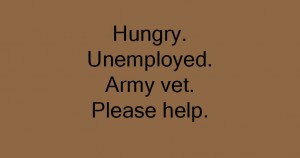What if Jean Valjean was black?
In America.
Today.
This week, forty-five Notre Dame students will travel to the Cadillac Palace Theatre in Chicago to experience the 25th Anniversary Tour of the epic musical, Les Miserables, the popular theatrical adaptation of Victor Hugo’s critique of nineteenth-century French caste society.
Jean Valjean is the show’s celebrated central hero: An ex-convict who breaks parole after serving a nineteen-year hard-labor sentence simply for robbing a house in order to feed his sister’s dying child. A punishment that seems outrageous to the audience’s ears.
Once paroled, Valjean runs into all kinds of barriers in place to keep him from any upward social mobility. Not to mention he will be hunted throughout the show by the musical’s main antagonist, Police Inspector Javert.
Though not always, the hero Jean Valjean is typically played by a white performer.
And in light of some recent critical research and scholarship about the histories and accounts of experiences of black men and other men of color in the segregated criminal justice system in the United States, Valjean’s Les Miz epic might have a lot to offer a discussion of our time and our place if we would consider, even for a moment, the counter-factual question:
“What if Jean Valjean was black in America today?”
Would he be able to achieve what the character Valjean achieves? Would we still cheer for him?
Do we?
I’ll leave it open for now, though I will posit that we might not have to rack our brains too much to answer this question. The difficult history of racial caste relations in America and its equally unsettling relationship with punitive justice, nonviolent crimes, and especially the War on Drugs have been explained critically enough in recent years by scholars such as Michelle Alexander.
And so although the audience smiles and applauds when Jean Valjean is able to break free of his oppressive system and achieve a wild, swashbuckling and fulfilling life, I hope that we don’t ignore the very real possibility that the situation of the dashing, singing character Valjean seen at the beginning of the musical might not be very different at all from the real-life situation of the man standing just outside the Cadillac Palace in downtown Chicago and holding the sign:

